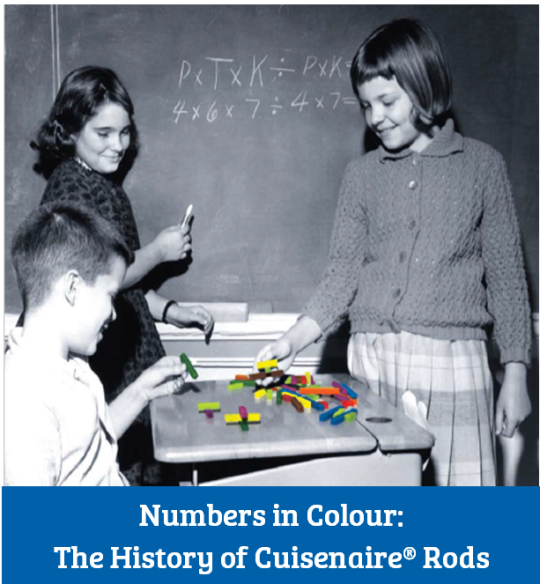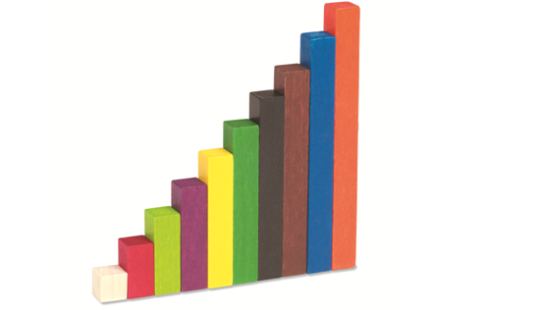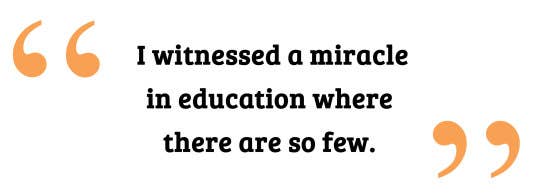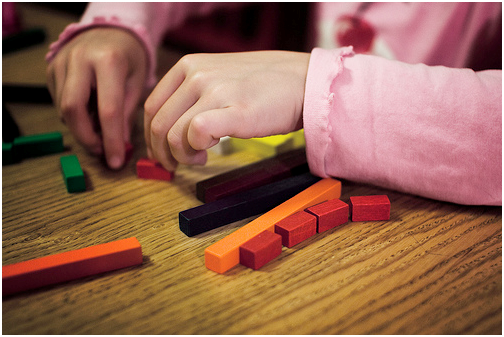
Numbers in Colour: The History of Cuisenaire® Rods



History of Cuisenaire Rods
Georges Cuisenaire (1891-1976) the inventor and namesake of Cuisenaire® Rods began his career as a teacher at the age of 20, A native of Thuin, Belgium, this dedicated primary school educator arrived at the idea of expressing numbers in colour through his lifelong knowledge of music.


–Dr. Caleb Gattegno on his first observation of Cuisenaire® Rods being used by Georges Cuisenaire in the classroom
How do they support the Mathematics Mastery approach?




- Numbers in Colour by Georges Cuisenaire

What are Cuisenaire® Rods?Cuisenaire® Rods are a collection of rectangular rods of 10 lengths and 10 colours, each colour corresponding to a different length. The smallest rod, a white centimetre cube, is 1cm long; the longest, the orange is 10 cm.


One set contains 74 rods: 4 each of the orange (σ), blue (e), brown (n), black (k), dark green (d), and yellow (y); 6 purple (p); 10 light green (g); 12 red ®; and 22 white (w). One aspect of the rods is that, when they are arranged in order of length in a pattern commonly called a “staircase,†each rod differs from the next by 1cm, the length of the shortest rod, the white.


Cuisneaire® Rods are a hands-on teaching resource which can be used to develop a variety of mathematical concepts from addition and subtraction to ratio and spatial reasoning.
History of Cuisenaire Rods
Georges Cuisenaire (1891-1976) the inventor and namesake of Cuisenaire® Rods began his career as a teacher at the age of 20, A native of Thuin, Belgium, this dedicated primary school educator arrived at the idea of expressing numbers in colour through his lifelong knowledge of music.


Cuisenaire found it curious this his students could understand the idea of whole notes, half notes, quarter notes, and eighth notes on a piano keyboard but, for some reason, could not understand similar fractional relationships when studying mathematics. Because notes in music are based on specific mathematical intervals, he began to develop the idea of a “keyboard†for numbers. In 1931, he experimented in the basement of his home with a set of rectangular rods sawed out of wood. The ten rods varied in length from 1cm to 10cm, each with the length painted a different colour. He soon found his students could use the rods to help them “see†and understand numbers and their relationships to each other. The results he obtained when he used these simple coloured rods to teach arithmetic were amazing. Not only did his pupils greatly improve their mathematics skills, but they also enjoyed and understood the work they did. It was clear that the analogy of a keyboard for mathematics worked.Nevertheless, this invention remained virtually unknown outside Cuisenaire’s small village for the next 23 years. The beginning of public awareness of this system began in 1952 with his publication of a small booklet titled ‘Les Nombres en Coleurs’. But the real increase in public exposure took place one year later, when Geogres Cuisenaire made the acquaintance of Dr. Caleb Gattegno, a mathematics professor at the University of London.


At this point, Dr. Gattegno had been a leading figure in bringing improvement to mathematics teaching at both primary and secondary level for many years. He realised that the rods not only provided a concrete algebraic model but they also provided teachers with a model for making lessons more focused around a child’s personal investigation of maths.Dr. Gattegno lectured in many countries and spread the word about Cuisenaire® Rods to teachers. His work with children and style of subordinate teaching with the rods demonstrated proven results. These experiences led him to produce a textbook series named ‘Mathematics with Numbers in Colour’, the rest, as they say, is history!


–Dr. Caleb Gattegno on his first observation of Cuisenaire® Rods being used by Georges Cuisenaire in the classroom
How do they support the Mathematics Mastery approach?


Maths Mastery is a style of mathematics teaching, inspired by the Singapore and Shanghai teaching techniques, it aims to enhance mathematical understanding, enjoyment and achievement for every child. The approach guides children through three different stages of learning (concrete, pictorial and abstract) as their knowledge and understanding increases.


Cuisenaire® Rods support this approach by laying a strong foundation for problem solving whilst satisfying children’s natural inclination to play. They relate abstract ideas about numbers and shapes to something children can see and touch. This makes mathematical ideas easier to internalise and encourages children to solve abstract problems they may not otherwise be able to.


When children are given the opportunity to explore freely with Cuisenaire® Rods they are likely to make designs, pictures and build three-dimensionally. From doing so, they will begin to notice rod attributes and relationships, for instance, that all blue rods are the same size, two reds equal a purple, or a purple is one white rod less than a yellow. This exploration provides a ‘concrete’ learning opportunity for children to discover and make conclusionsindependently. Once mastered, children will progress to the ‘pictorial’ and ‘abstract’ stages of Mathematics Mastery.


- Numbers in Colour by Georges Cuisenaire


*Discover more and browse our selection of Cuisenaire® Rods!
Related reads:
- What is Mathematics Mastery?
- Maths Mastery: Insights from a Year 3 Maths Leader
- Base Ten: The Maths Mastery Manipulative
- Five activities you didn’t know you could do with Cuisenaire® Rods
Sources:http://www.cuisenaire.co.ukETA Cuisneaire: Celebrating 75 yearshttp://www.froebelweb.org#LoveLearning















